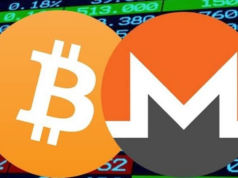The throughput of each blockchain network is an element of the network’s design. Usually, transactions per second (TPS) are used to measure blockchain throughput. This number is the number of transactions the network can process per second.
The blockchain scalability is an ability of a network to increase the throughput as the network grows. And the scalable blockchain is a blockchain, that has an ability to process more transactions per second as the network grows. Yet, not all blockchains are scalable.
The scalability issue in the blockchain is related to throughput limits of previous-generation cryptocurrencies such as Bitcoin and Ethereum. Bitcoin network can process near 7 transactions per second. Ethereum has approximately 20-25 transactions per second. Those numbers are not nearly close to the needs of a real-world economy. In fact, only Visa handles thousands of transactions each second. Bitcoin, and cryptocurrencies similar to Bitcoin, are not designed to perform that many transactions each second.

The lack of scalability is a serious issue for further adoption of cryptocurrencies. But there are cryptocurrencies that can bring solutions to the scalability issue.
Implementing blockchain sharding is one of the ways to reach advanced scalability. Sharding is a technique that allows splitting a blockchain into parts called shards. Sharding is one of the best ways to make a blockchain scalable.
There are cryptocurrencies that had implemented sharding successfully. Zilliqa and Elrond Networks are good examples of blockchains with sharding.
Zilliqa was the first public blockchain with sharding. Now, Zilliqa has achieved 2828 TPS. This is not the limit, and with the growth of the network, even higher results can be achieved.

Elrond Network is another project successfully implemented sharding. The test has shown excellent results. Elrond Network can process much more than 10,000 TPS. That makes Elrond Network one of the fastest cryptocurrencies with sharding.
Another way to achieve advanced scalability is by utilizing DAG architecture. DAG (directed acyclic graph) is a technology similar to blockchain. DAG and blockchain difference is the connection of blocks within the network. Implementing DAG allows achieving very high throughput. The number of TPS DAG-based networks can potentially reach tens of thousands.
Both DAG and blockchain can be utilized to create a scalable network. What is better, DAG, or blockchain? The choice depends on many factors. However, DAG and blockchain are effective to achieve high transaction throughput.
One of the most interesting DAG-based cryptocurrencies is Fantom. Fantome is aimed to become a digital infrastructure for smart cities. Obviously, this goal requires a network scalable enough to process significant amounts of data. The testing of Fantom limits is still going on, but even now Fantom networks are ready to achieve more than 10,000 TPS.

There are many other cryptocurrency projects focusing on creating scalable networks. They may use different tech solutions, yet all of them are trying to solve the scalability issue and give a boost for further adoption of blockchain and cryptocurrency in our daily life. The potential impact scalable networks could bring to the world is huge, so blockchain scalability is an interesting issue studied by the experts in the blockchain industry. Would you like to learn more about scalable coins? Start with a good Fantom review you can find here.









